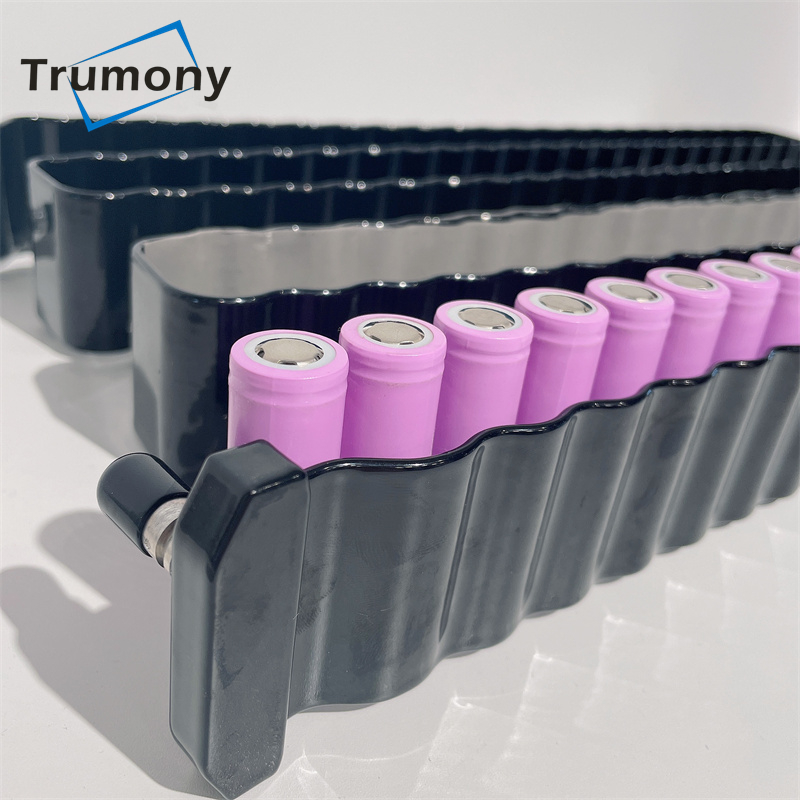
Privacy statement: Your privacy is very important to Us. Our company promises not to disclose your personal information to any external company with out your explicit permission.
Liquid-cooling tube, also known as cooling serpentine tube, is a heat exchange component commonly used in cylindrical batteries. The liquid-cooling tube uses a unique hollow structure pipe and is developed with high precision manufacturing quality. It has a large inner surface area can achieve more efficient heat conduction, so it is often used in battery packs with cylindrical cells.
As we all know, high temperature is the invisible killer of electronic components, integrated circuits, etc. High temperature will not only shorten the service life of the equipment, cause unstable system operation, and even cause problems such as component burnout. Therefore, heat dissipation treatment of electronic components and integrated circuits cannot be ignored. There are many types of heat dissipation methods, such as liquid cooling, air cooling, and evaporator air cooling. Among these heat dissipation methods, liquid cooling stands out for its excellent heat dissipation efficiency, low space occupation and silent characteristics, and has been widely used.
Liquid cooling devices usually use pumps to circulate the coolant in the liquid cooling tube and dissipate heat. Therefore, the liquid-cooling tube is an important part of the liquid cooling device. It can not only serve as a channel for the coolant to flow without contacting the heating element, but it can also serve as a heat transfer pipe, directly in contact with the heating element, absorbing the heat of the heating element and transferring the heat to the coolant.
Normally, when a liquid-cooling tube doubles as a heat transfer pipe, you can generally change the material of the liquid-cooling tube, the composition of the coolant, and increase the contact area between the liquid-cooling tube and the heating element, the flow rate of the coolant in the liquid-cooling tube, etc. method to enhance the heat dissipation effect of the liquid cooling device.

Liquid-cooling tubes are usually made of aluminum, copper alloy or a combination of the two. In terms of thermal conductivity, there are other materials that have better thermal conductivity than copper and aluminum alloys, such as silver, but silver is more expensive, so it is generally Silver is not used for liquid cooling tubes. The selection of materials for liquid-cooling tubes is determined by factors such as the material's price, processing difficulty, weight, hardness, and usage environment. It cannot just look at the thermal conductivity of the material. Therefore, changing the material of the liquid cooling tube to enhance the heat dissipation effect of the liquid cooling device has certain limitations.
In the same way, the selection of coolant components is also determined by the price of the coolant, specific heat capacity, heat absorption capacity, usage environment and other factors. Therefore, changing the composition of the coolant to enhance the heat dissipation effect of the liquid cooling device also has certain limitations. Increasing the contact area between the liquid-cooling tube and the heating element will correspondingly increase the space occupied by the liquid cooling tube within the system, resulting in a reduction in the space utilization within the system. In addition, increasing the contact area between the liquid-cooling tube and the heating element also has many problems such as complicated design and increased cost
The flow rate of coolant in the liquid-cooling tube is related to the density, viscosity of the coolant and the power of the pump. Among them, the power of the pump is the main factor that determines the flow rate of the coolant in the liquid-cooling tube. Generally speaking, the greater the power of the pump, the greater the flow rate of the coolant in the liquid cooling tube. As the power of the pump increases, the working energy consumption of the pump will also increase, the power consumption will increase, and the cost will increase. At the same time, as the power of the pump increases, the requirements for the pump will also increase, and the cost of the pump will also increase

Ms. Tracy
Tel:
86-512-62532616
Fax:
86-512-62538616
E-mail:
Related Products List
Mobile Site


Privacy statement: Your privacy is very important to Us. Our company promises not to disclose your personal information to any external company with out your explicit permission.

Fill in more information so that we can get in touch with you faster
Privacy statement: Your privacy is very important to Us. Our company promises not to disclose your personal information to any external company with out your explicit permission.